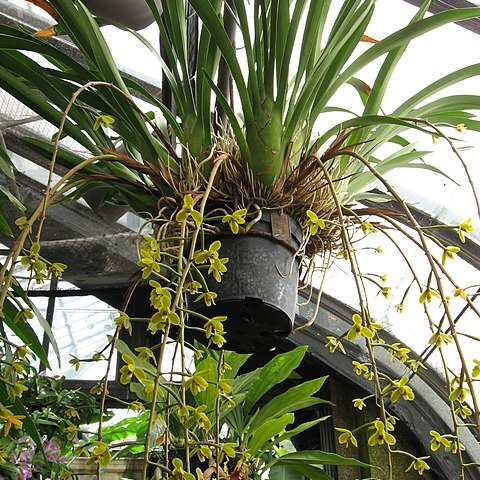An orchid. It has large pseudobulbs. The leaves are erect to arching. They can be 80 cm long. The flower stalks are arching or hang down. They can be 1.2 m long. It may produce 50 to 60 flowers. Each flower can be 2.5 cm long. The flowers have a slight sweet scent. The flowers are green to yellow.

